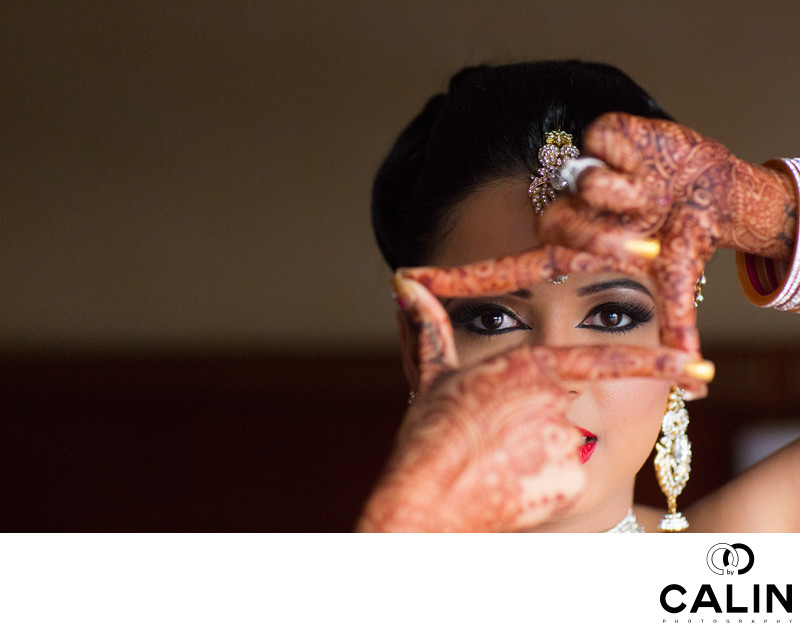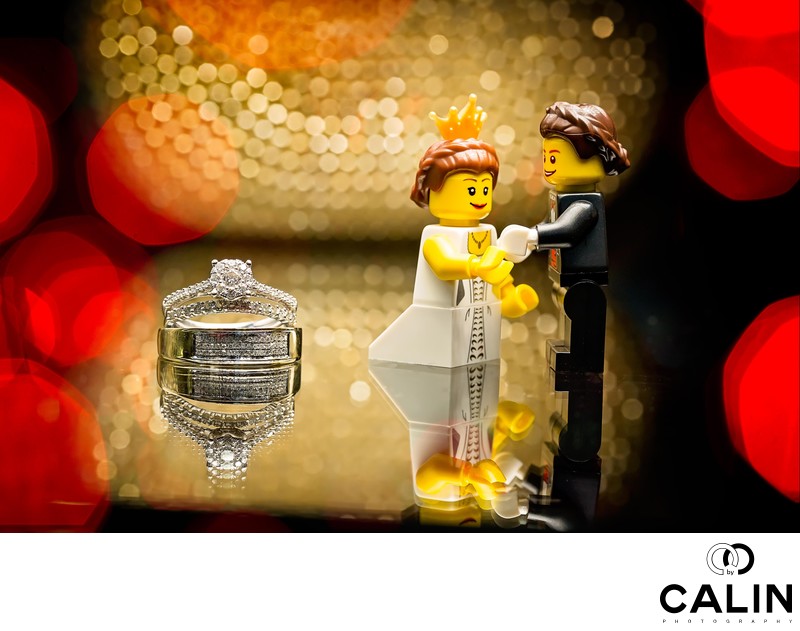I Love Prime Lenses
1. Prime Lenses Are Light
One day I came across Chrisman Studios website. Yes, if you are a bride and can afford them, book them as soon as possible!! They are definitely worth the money they are charging!!! Anyway, The Chrismans and now their other photographers were delivering stunning results. I just had to take a closer look at their gear. I was sure they had some secret "weapons” I was missing. Oh, I was saved!!! If I just spent another few thousand bucks, I would finally become one of the best photographers.
To my stupefaction, when looking closer at their gear - that by itself cost me a few good days - I noticed something strange. The Chrismans DID NOT use a lot of gear. Yes, you heard it right, they did not carry hundreds of lenses, flashes and others. They only uses two cameras and two lenses. The 35mm and the 85mm. Now there was something even stranger. Many of their photos were not taken with the most expensive 35/85mm lenses. Of course they were not using cheap kit lenses, but they were also not rocking the heavy top of the line primes either. It was very very strange!!!
Shocked by my photographic revelation, I decided to look at other great photographers: many of the Top Fearless Photographers used primes: Davina and Daniel, Fer Juaristi, TwoMann were all in the prime lens camp. They were all using the 35mm-85mm combo (and maybe a macro lens and a very wide one but that was rather the exception). Yes, it made perfect sense! These guys travel a lot and they can not just pack two trunks full of equipment, it is just not possible, so they had to adapt or pay exorbitant airline fees.
Even more, if one photographs with only two lenses mounted on two cameras, one has to know them by heart after a while. It’s just like driving a car to work every day. If you switch cars every day, you are never quite comfortable with all the buttons and can never know the limits of each of them Bingo! I had my answer! In my crazy race to become a better photographer, I was not taking the time to master each piece of gear I had: I did not realize the 16-35 mm is soft when wide open at 16mm, that my macro render things completely out of focus at f2.8, that my 85mm 1.2 misses focus at f1.2 and if you breathe or had coffee, you could kiss the sharp photos good bye.
The more equipment you have the more time you need to spend to master it, so the longer it takes you to become a good photographer. This is definitely counterintuitive! I remember when I started I took some of my equipment with me when I met clients, as I wanted to show them I was serious about photography. I was carrying maybe $25,000 worth of photographic equipment in one bag and my clients were indeed impressed. About 99% of the ones I met booked me and I thank them for that.
I am indeed serious about photography and I honestly thought that more equipment means better photos, right? Wrong, despite all the marketing noise we hear from Canon, Nikon, Profoto, Sekonic and other famous photographic equipment providers. Sorry my beloved Canon! As such, I made the switch! I dropped the zooms in the middle of the wedding season.
In conclusion, I dropped more than 50% of my lenses weight!!! My back is definitely happier now and I take less time to recover, to a point where I photographed 3 weddings back to back on a few weekends.
2. Prime Lenses are Sharp
With the proliferation of high definition cameras using sharp lenses is crucial. Before, medium format cameras were the way to go when it came to high resolution, but recently Canon launched the 5DS and 5DS R with a 50mp sensor!!! I am not sure why Canon is still in the megapixel race when the dynamic range of its cameras is behind Nikon. For example a 5Ds has a 12.4 stops dynamic range vs the Nikon D750's impressive 14.5 stops. For the non geeks out there, that means that on a sunny day, the sky will look blur on a Nikon D750 and white on a Canon 5DS 0r Canon 5DS R. The Nikon D750 is as good as the human eye in terms of dynamic range!!! However, the dynamic range is a completely different story we will address in a different blog post. Prime lenses are sharp!!!
Below you can see a portrait of a stunning Indian Bride on her wedding day taken with the 85mm 1.2 at f1.2 (wide open). Though the hair piece is showing signs of chromatic aberration common to photos taken with the Canon 85 1.2, the photo is tack sharp. Chromatic aberration can be easily fixed in post production, but I left it untouched on purpose in case you are looking for flaws of this great lens.

A similar comparison between the Canon 70-200mm 2.8 L II and the Canon 85mm 1.2 L II at f 2.8 , shows a clear advantage of the Canon 85 1.2 in terms of sharpness, again at their widest common aperture, f2.8.

Finally, my third secret "weapon" is the Canon 100mm 2.8 L macro lens (The image above was shot using that lens). It is a fantastic lens and while I have never used the consumer 100mm macro, I can attest to the professional L lens quality. This lens can be used for macro photography, but also portraits though it is somewhat slow to focus. I would advise against using it to photograph fast action scenes such as wedding receptions because of the slower focus. Still, this is an EXTREMELY SHARP to a point where you need to need to do serious skin softening if you photograph a bride's portrait using the Canon 100 mm 2.8 L II macro. It is interesting that in our megapixel race to the top, we made human subjects look slightly worse. A comparison between the 100mm macro and the 70-200 mm 2.8 L II at f2.8 is difficult because the two lenses have two different purposes. The macro lens is made of plastic and very light, focuses close (which is extremely useful for detail shots) but lacks the focusing speed of the Canon 70-200mm 2.8 L.
If you are debating between primes and zooms, I urge you to look through your photos and see if you shoot a lot at or around 24mm, 35mm, 85mm, 100mm, 135 mm. If that is the case, you can easily switch from zooms to primes and gain in image quality.
3. Bokeh is Splendid
Bokeh is originally a Japanese word that means out of focus and it is the star dust in the top photo on this page. The word has been adopted by photographers who creatively butcher its pronunciation in a million ways. Pronounced properly, the word rimes with "mocha" (coffee) in fact if you change the m in mocha, you have the perfect pronunciation. Prime lenses have a bokeh that is more pleasing to the eyes when compared to zoom lenses at the same focal distance.
4. Colour Quality is Splendid
Color is another element that differentiates primes from zooms. Generally prime lenses capture better the colour producing more vivid imagery. Sure colours can be enhanced in post processing, but a prime lens gives a photographer a head start. While it is very difficult to explain, many photographers can tell when a photo was taken with a prime lens.
5. Subject Isolation is Outstanding
Because the shallow depth of field produced by prime lenses at wide apertures (f1.2 -f2) , they cause a drastic separation of the subject from the background. In wedding photography that is key when photographing in cluttered environments such as hotel rooms. If you analyze the ring photo at the top the ring is clearly jumping out of the page and you can see that only a sliver of the granite base is in focus.
6. They Focus Fast and Need Less Light
Another huge advantage of the prime lenses over the zooms is the fact primes need less light and generally focus faster than zoom lenses.
For example, my 35mm f1.4 needs four times less light than another 2.8 L lens or eight times less light than a professional f4 lens. Even more, the consumer lenses go from f3.5 to f5.6 and at the longest range of the focal length a consumer lens needs sixteen times more light than my prime lenses, or in the case of my 85 1.2 about eighteen times more light.
To compensate for that, one has to raise the ISO by 2-4 stops. In a dark church where the ambient exposure is f1.4, ISO 800, 1/100s, a photographer using a consumer lens needs to increase ISO anywhere between 3200 and 12,000 which creates a lot of noise and drastically reduces sharpness when noise is corrected in post processing.
At f1.4, ISO 3200, my images are perfectly usable even in a dark church, while the zoom colleagues would have to reject quite a lot because of the high noise that appears over ISO6400. If the photographer uses a crop camera (consumer) that is a recipe for disaster as the performance of consumer camera in low light is poor at the time when this article is written.
With the advent of the mirrorless cameras with insanely great low light performance, I am sure this will change in the not so distant future. However as of 2016 consumer cameras are only so good.
While the camera does not make the photographer as I mentioned in my other blog entry, a minimum set of equipment will reduce the chances for failure. That is also why your friend with a camera will not be able to take the photos I am going to take in extreme situations using my prime lenses.
A serious problem with low light is that lenses have a tendency to “hunt” for focus and find it difficult to focus. Unfortunately, neither the primes nor the zooms excel in this area. However, because the primes allow at least four times more light than the zooms, they also have a tendency to focus faster, with some exceptions, notably the Canon 85mm f1.2. That lens is notoriously slow focusing in low light because of the weight of its glass and the insanely shallow depth of field.
To give you an idea how shallow, when photographing a bride from 9 feet, her eyelashes are in focus while anything else is out of focus. That has multiple advantages: first, it has a skin softening effect in camera. Second and even more important, it makes the subject “pop” or jump off the page if you wish. The downside is that one needs to take quite a few shots to make sure the eyes are in focus. If you are like me, with a low tolerance for soft photos, you will find that the keep rate is slightly lower at f1.2 especially for moving subjects. That makes this particular lens a no go for receptions for many wedding photographers. They chose instead to work with the 85 1.8 lens which is fast focusing in low light and delivers good quality for the money. However, this is not an article about the Canon 85 f1.2 but rather about the prime lens family so we will move on.